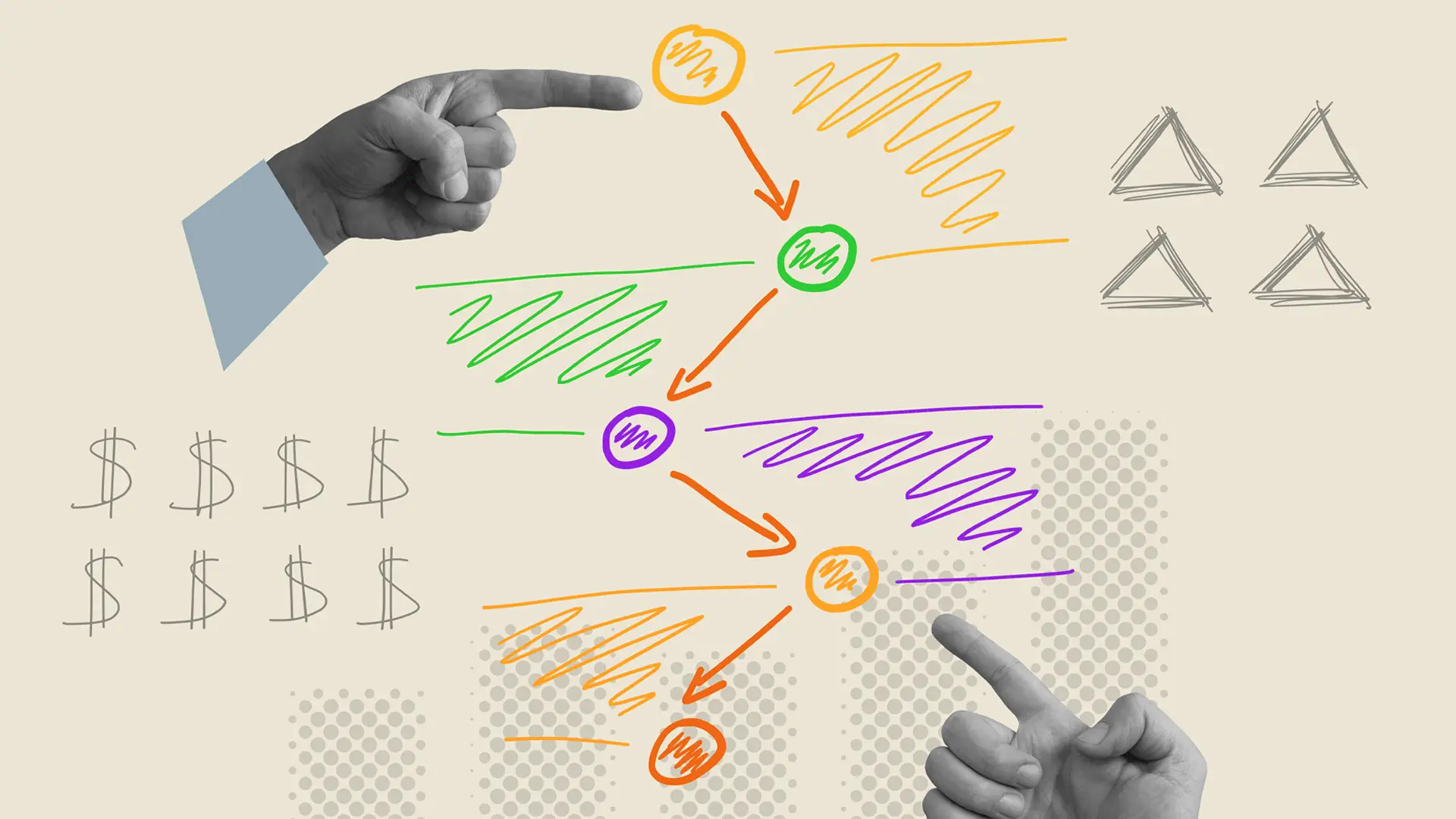

Key Takeaways
- A seamless omnichannel banking experience is crucial for maintaining customer trust and loyalty.
- Customers expect a unified experience that allows them to easily transition between channels without loss of service quality.
- Customer journey mapping helps banks understand interactions and identify areas for improvement to enhance user experience.
- Effective engagement requires multiple touchpoints, with studies suggesting five to seven touchpoints for attracting new customers.
- Aligning touchpoints across channels helps banks provide valuable insights and decision-making support to their customers.
Listen: Master omnichannel banking with a customer-driven focus.
Imagine being the source of unshakable trust and reliability for your customer's financial management. One that cannot be easily replicated by your competitors and is indispensable to your customers. This is the promise of a seamless omnichannel experience in banking. Let's unpack the details of what omnichannel banking truly means.
Keep reading for:
- Customer expectations: How unification breeds insights and builds trust.
- Journey mapping: The path(s) customers take to becoming a vested user.
- Touchpoints: Interactions the customer has with your brand (ads, emails, texts, app / desktop UX, etc.).
- User research: The information and data acquisition used to influence touchpoints and the overall journey.
- Friction: Where to eliminate work for the user and where to enforce it.
The omnichannel challenge
Omnichannel banking means ensuring that every interaction a customer has with their bank—whether online, on mobile, at an ATM, over the phone, or in a branch—feels connected and consistent. Customers want to move easily between channels without repeating themselves or encountering disruptions. If banks can't deliver this, they risk losing customer trust and loyalty. Something that is both hard-won and easily fractured.
Growing customer expectations
Customers expect unification. They want the option of starting a process on one channel and finishing it on another without losing information or service quality. They demand a banking experience that is as fast, smooth, and connected as the rest of their digital lives.
In parallel, they are also seeking insight to help them make decisions. While these two concepts may seem mutually exclusive, omnichannel congruency helps build the data to fuel these insights. It starts with the customer journey.
Mapping the customer journey
Let's begin with a view of the journey a customer goes through.
It's deeper than a marketing funnel it's more of a map that can weave throughout your products and services. While each of these paths may represent a different vertical (think loans, accounts, and advising) they should all have a familiarity to them that signifies the cohesion we spoke about earlier.
Customer journey mapping is a visual representation of the steps a customer takes when interacting with a company, from the initial contact to the final transaction and beyond. This map helps businesses understand the customer's experience and identify pain points and opportunities for improvement.
It ensures processes are in place, and it reveals where customers might face obstacles and where you can smooth out the issues to improve their journey. This is where your touchpoints will come in.
Key customer touchpoints
The account opening process, often the first significant step ( apart from lead generation), sets the tone for the entire relationship. A streamlined, user-friendly approach, whether online or in branch, makes a strong first impression. Studies show that five to seven touchpoints are ideal for attracting new customers, while three to four touchpoints work best for maintaining long-term engagement.
Consider Jane, a new customer who saw an ad for your bank, highlighting its accessibility and a great fit for someone short on time (point one). She clicks the ad and starts to open a checking account on her desktop (point two). She receives an email to confirm her information (point three).
From there, she becomes distracted and leaves her computer. After a few hours, she's prompted to return and complete her registration (point four), but she's still occupied and forgets.
A day or so passes, and she receives a new email reintroducing her original offer with a link to complete enrollment (point five), which she engages with. This is followed by a prompt to download the company app for a more convenient medium (point six). After a few weeks, her user data gives her insights into her spending and prompts her to open a high-yield savings account to maximize her idle funds (point seven).
From here you continue to strengthen the relationship and offer the value Jane was seeking originally while also having the opportunity to increase the company ROI and increase the total LTV. But it all begins with understanding the user you're targeting.
Importance of user research
Without an understanding of Jane's persona, the original targeting may have been ill-suited. Jane was seeking a checking account, engaging her with a high yield savings may have resulted in her looking elsewhere or at the very least considering other options.
User research is the cornerstone of understanding your customers' needs and behaviors. By gathering insights directly from users, you can pinpoint what they value, where they struggle, and how they interact with your banking services. This knowledge allows you to tailor your offerings to better meet their expectations and enhance their overall experience.
- Surveys: Surveys are effective for collecting broad data. By sampling a large audience, surveys provide a general sense of customer satisfaction and preferences.
- Interviews: Interviews offer deeper, qualitative insights. By exploring individual experiences, interviews help uncover nuanced pain points and provide context to the data.
- Usability testing: Usability testing is great for observing real user interactions. This method helps identify areas where users might struggle or feel frustrated while using your digital platforms.
Identifying friction points
Instant gratification is no longer a synonym for impatience; instead, it is proof of function. By eliminating unnecessary friction and providing something that performs reliably and consistently, you are solidifying yourself as the indispensable provider.
Friction points are moments when customers encounter obstacles or delays, which can lead to frustration and possibly abandonment of the service. Common examples of friction points include complicated processes, unclear terms / industry jargon, and platforms that lack intuitive design.
Let's go back to our example with Jane, where friction was strategically used at the beginning of her journey. She was required to submit her information from the first touch point and confirm receipt to continue (aka a double opt in).
From there, she was given an easy ‘yes' with every additional interaction. When reminded to complete the application, she was provided with a link, and not required to go back to her desktop and start over. Once she was signed up, she was given another opt in for the app, a win-win for both parties, offering her convenience and the app provider access through notification abilities.
Benefits of journey mapping to influence omnichannel marketing
45% of organizations are now channeling investments into customer journey analytics, driven by the significant benefits journey mapping brings in enhancing customer experience and boosting operational efficiency. It fuels omnichannel success.
By laying out each step a customer takes, from the first interaction to the last, banks can identify where processes are working well and where they fall short. This holistic view allows for targeted improvements that can reduce friction, streamline operations, and ultimately lead to a more satisfied customer base.
Jane was a great example of a successful omnichannel experience. She was:
- Enticed by the acquisition messaging.
- Offered just enough friction to capture the necessary information without causing frustration.
- Supported through the onboarding with a user-focused experience.
- Encouraged to complete the process with timely (but gentle) reminders.
- Given the easy ‘yes' with accessible links, insights, and assistance.
The outcomes of effective journey mapping are clear: increased customer satisfaction, higher retention rates, and stronger loyalty.
Related

Great brand collaborations are the best to strengthen identity.
Design & Experience, Insights & Trends, Marketing & Creative, Beauty and Fashion

Consumer demand and policy are driving EV market growth.
Development & Technology, Insights & Trends, Automotive

Are you missing opportunities to improve health screenings?
Design & Experience, Marketing & Creative, Health

